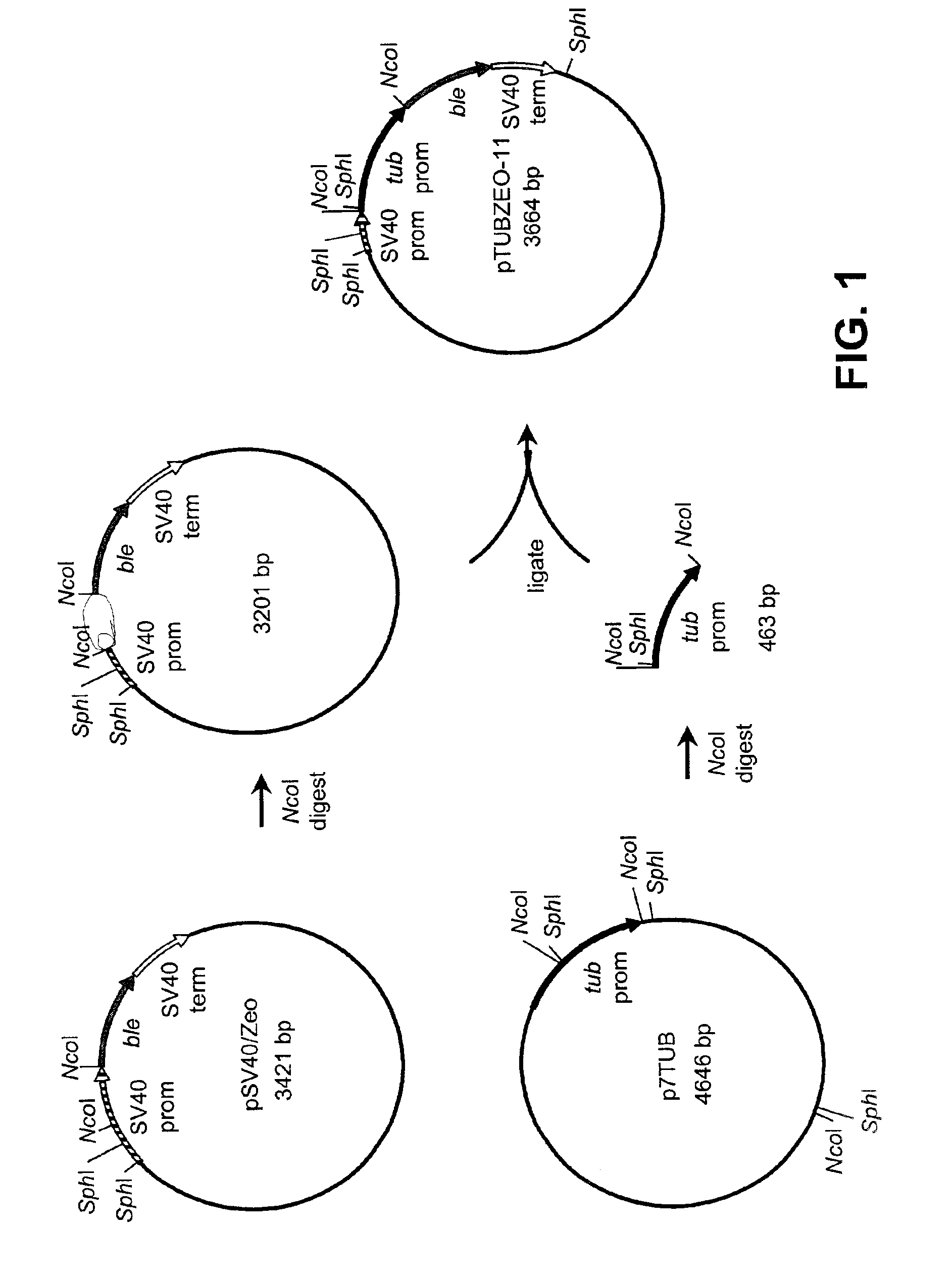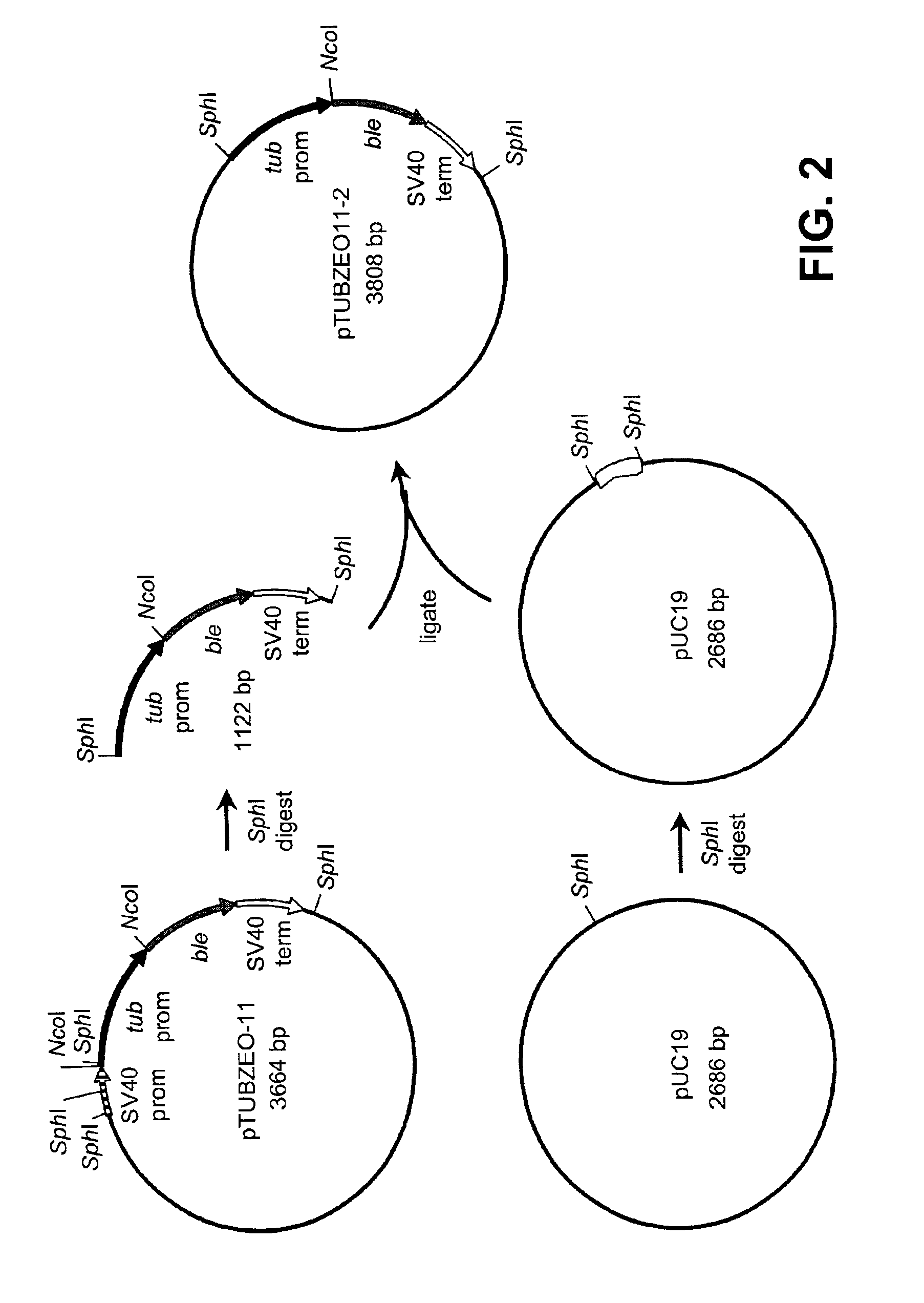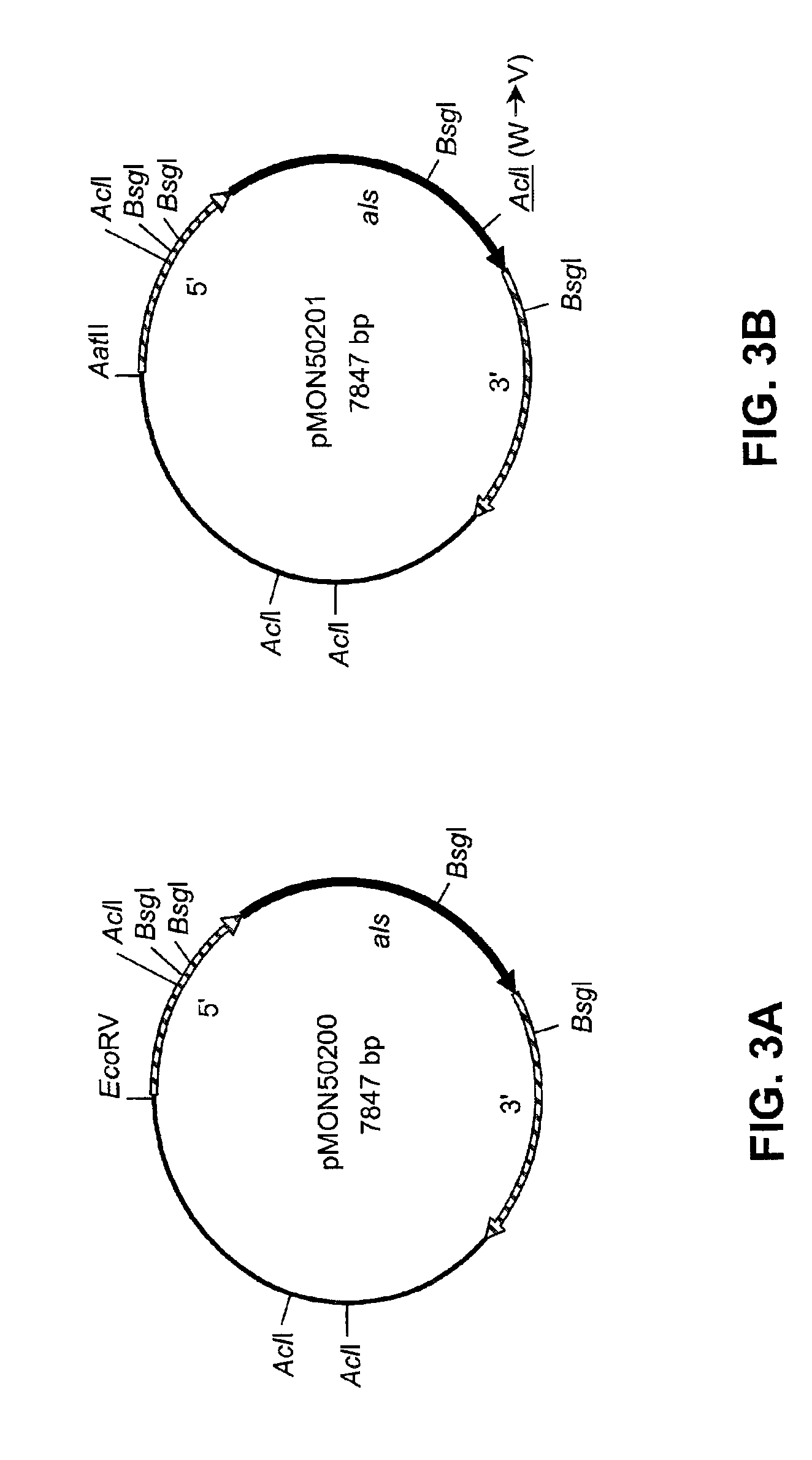Product and process for transformation of Thraustochytriales microorganisms
a technology of thraustochytriales and microorganisms, applied in the field of product and process for thraustochytriales microorganism transformation, can solve the problems of not being the transformation system of markers and transformation systems that have become well developed for bacteria and yeast is not necessarily readily adaptable to other microorganisms, and the method is not readily transferable to the transformation of thraustochytriales microorganis
- Summary
- Abstract
- Description
- Claims
- Application Information
AI Technical Summary
Benefits of technology
Problems solved by technology
Method used
Image
Examples
example 1
[0122]This example describes the production of recombinant plasmid pTUBZEO11-2.
[0123]Construction of recombinant plasmid pTUBZEO11-2 is illustrated in FIGS. 1 and 2. This plasmid contains the ble gene from Streptoalloteichus hindustanus functionally coupled to an α-tubulin gene promoter isolated from Schizochytrium sp. This plasmid was produced as follows. A cDNA clone (CGNE0002-001-B6) was isolated from a Schizochytrium sp. cDNA library and partially sequenced (SEQ ID NO:1) as part of a large-scale Schizochytrium cDNA sequencing project. The nucleotide sequence was determined to encode α-tubulin by BLASTX homology searching (Gish, W. and D. States. 1993. Nat. Genet. 3:266-272). The amino acid sequence deduced from bases 116 through 550 is 93% identical to the first 145 amino acids of α-tubulin from Pelvetica fastigiata (GenBank Accession No. U58642).
[0124]In order to isolate the promoter associated with this gene, genomic DNA was isolated from Schizochytrium sp. cells and processed...
example 2
[0127]This example describes the production of recombinant plasmids pMON50200, pMON50201, pMON50202, and pMON50203.
[0128]The native acetolactate synthase-encoding gene (als) from Schizochytrium sp. was isolated in the following manner. A cDNA clone (LIB81-028-Q1-E1-D9) was isolated from a Schizochytrium cDNA library and partially sequenced (SEQ ID NO:11) as part of a large-scale Schizochytrium sp. cDNA sequencing project. The nucleotide sequence was determined by BLASTX homology to encode acetolactate synthase; e.g., the amino acid sequence deduced from bases 154 through 378 was 68% identical with amino acids 313 through 387 of ALS from Schizosaccharomyces pombe (GenBank Accession No. P36620). The full-length sequence of this cloned cDNA was then obtained, which indicated that the cDNA clone did not contain the entire als coding region. In order to obtain the full-length als gene, a Schizochytrium genomic lambda library was probed using standard protocols (see e.g. Sambrook et. al.,...
example 3
[0130]This example describes the genetic transformation of Schizochytrium sp. with the recombinant molecules described in Examples 1 and 2.
[0131]The strain used in this example in Schizochytrium sp. N230D, a derivative of American Type Culture Collection strain 20888 (ATCC, Manassas, Va.). For liquid cultures, cells were grown axenically in M50-3 medium at 30° C. with shaking at 200-300 rpm. M50-3 medium contains the following components: NaCl, 12.5 g; MgSO4.7H2O, 2.5 g; KCl, 0.5 g; CaCl2, 0.05 g; glucose, 30 g; Na-glutamate, 3 g; KH2PO4, 0.4 g; yeast extract, 1 g; NaHCO3, 0.4 g; Na2EDTA, 30 mg; FeCl3.6H2O, 1.2 mg; H3BO3, 34.2 mg; ZnSO4.7H2O; 0.67 mg; CoCl2.6H2O, 0.13 mg; NaMoO4.2H2O, 25 μg; CuSO4.5H2O, 10 μ; NiSO4.6H2O, 0.26 mg; thiamine.HCl, 100 μg; biotin,0.5 μg; cyanocobalamin, 0.5 μg, and deionized water (to one liter); final pH adjusted to 7.0. For growth on solid media, cells were grown at 30° C. on M50-3 medium or M1E-3 medium solidified by the addition of 1.5% (w / v) agar. M...
PUM
| Property | Measurement | Unit |
|---|---|---|
| concentrations | aaaaa | aaaaa |
| melting temperatures | aaaaa | aaaaa |
| temperature | aaaaa | aaaaa |
Abstract
Description
Claims
Application Information
 Login to View More
Login to View More - R&D
- Intellectual Property
- Life Sciences
- Materials
- Tech Scout
- Unparalleled Data Quality
- Higher Quality Content
- 60% Fewer Hallucinations
Browse by: Latest US Patents, China's latest patents, Technical Efficacy Thesaurus, Application Domain, Technology Topic, Popular Technical Reports.
© 2025 PatSnap. All rights reserved.Legal|Privacy policy|Modern Slavery Act Transparency Statement|Sitemap|About US| Contact US: help@patsnap.com



